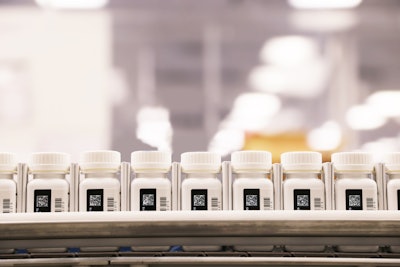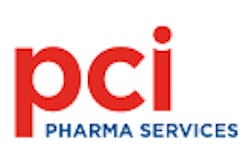Even with FDA’s one-year delay regarding DSCSA product identifier enforcement, serialization demands continue to challenge pharmaceutical manufacturers. Imagine meeting those deadlines on more than 80 global packaging lines.
That’s the task PCI Pharma Services is facing head-on. Because DSCSA regulations call for serialization on the “unit of sale,” PCI, a contract manufacturing organization (CMO) serving the pharmaceutical industry, must be “serialization-ready” for multiple package types, such as blisters, bottles, adherence packaging, vials, prefilled syringes, autoinjectors and pens, folding cartons, a kit packed with multiple components, a 10-pack of vials, or even a shipping case of a product, depending on what defines a manufacturer/customer’s unit of sale.
“As a contract packager, managing this variability and ensuring flexibility in our operations is absolutely vital to our success,” notes Justin Schroeder, PCI’s Senior Executive Director, Global Marketing & Design. “We have worked closely with our select vendors to custom-engineer the equipment we are using, providing the most flexible and adaptable solutions and at the same time leveraging consistency for our staff and operators. We need to support serialization requirements for the U.S. and Europe with its tamper-evident requirements, in addition to emerging market destinations like China, South Korea, Turkey, etc.”
The CMO has serialized commercial pharmaceutical packaging for more than five years, initially developing packaging lines by relying on in-house expertise. But once the U.S. government established firm regulatory serialization deadlines, the company knew it needed to add considerable scale to meet growing customer demands. “At that point, we executed a broad market analysis of serialization systems and the maturity of their solutions,” Schroeder says.
The company’s analysis led to partnerships with key vendors that include Domino, Antares Vision, Xyntek and Marchesini, to address serialization and aggregation challenges.
Schroeder explains, “Serialization has really taken over our company at this point of the readiness process. We have so many clients mobilizing at the same time, it dominates our everyday activities. We are scaling up installation and readiness to the point where we have three-to-five installations a week. Leveraging the consistency and best practices of our select vendor partners like Domino has allowed us to really focus our efforts to meet all our clients’ goals and deadlines. Domino has been fantastic in engaging both Antares and Marchesini as true partners, particularly given the critical nature of code application and online vision inspection inherent to the serialization process. We have benefitted from their expertise and finding the optimal solution for each application.”
Aggregation phase
Following serialization, aggregation is typically considered the next phase in the pharmaceutical supply chain. Yet, as Schroeder points out, “We continue to see some companies shying away from aggregation, largely due to the DSCSA not requiring it. That runs completely contrary to our recommendation to aggregate based on our real-world evidence that it significantly improves processes and quality.A significant point of consideration is the robustness of online coding and inspection, since we have to account for every individual unit.”
He says aggregation continues to be a hot topic in the industry, but notes, “The drug distribution community has made it apparent they desire to be supplied goods with aggregation and will not accept the practice of ‘inference.’ Many large multinational pharmaceutical companies have publicly stated they intend to meet the minimum standard of the DSCSA legislation and therefore will not begin with aggregated drug product. We feel this is a missed opportunity.
“In our own operations, we have quickly realized there is significant benefit in leveraging aggregation. The discipline of aggregation really tightens up operational practices and allows you to strengthen checkpoints in your packaging system. For many years we have utilized online vision inspection for item verification as well as lot and expiration code inspection. With the discipline and technology inherent in aggregation, given the proper application, you now have a ‘last look’ at packages as they enter the shipping case. If applied correctly, you have a 100% verification of those units and their codes.” Since companies need to account for every single code in their system, he contents, aggregation allows the realization of a stronger level of control.
Schroeder explains, “We have had clients desire to have PCI match their internal systems where they were not aggregating. We quickly realized the decreased level of control created significant challenges. If a code was not accounted for, the lack of aggregation creates a virtual needle in a haystack for re-inspection to attempt to affirm all codes are 100% accounted for. It’s for that reason that we strongly advocate for aggregation and utilize it wherever possible.”
Aggregation and leachability
Paul Hammond, Domino North America’s Life Sciences Sector Development Manager, notes, “Without the use of aggregation, one is left to ‘infer’ what is contained, or be left to physically open and investigate the contents to verify what is contained within. The principle of using inference is rife with concerns in high-speed packaging operations and downstream warehousing and supply chain activities. Given the spirit of the DSCSA and the serialization initiative, the integrity of both the physical packages as well as the serialization data is paramount to ensuring a safe and effective supply chain.”
Speaking about PCI’s serialization requirements, Hammond notes, “While most pharmaceutical lines serialize using laser or inkjet printing, serializing round bottles presented a unique situation since the bottle is rotating the entire way down the production line, making it impossible to guarantee the serialized label is presented correctly to the vision system. Therefore, for aggregating bottles into cases, PCI needed a ‘helper’ code printed on the cap or bottom of each HDPE bottle using continuous inkjet printers. The datamatrix code on the top or on the bottom of the round bottles gets married to the serialized label via Antares’ software. This guarantees that the cameras used for aggregation have a consistent location to use for locating the serialization information via the helper code.
“As PCI began executing their serialization strategy, Ray Hook, Senior Manager of PCI’s Global Serialization Services, recognized the need to validate that the inks being used for printing these helper codes weren’t migrating through the bottles. Working in collaboration, PCI and Domino identified the key inks required and developed testing criteria to demonstrate compliance with industry leachability requirements.” A video demonstrates how PCI and Domino collaborated to address the issue of ink leachability and keeping ink on and out of coded bottles.
The two companies worked to make certain these helper codes would be readable on high-density polyethylene (HDPE) bottles, and meet stringent USP 661.2 requirements. To achieve those goals, PCI provided HDPE bottles with a very thin wall thickness of 0.015 in., to represent a worst-case scenario.
A Domino Continuous Inkjet Leachables Study confirmed through scientific testing and analysis that the soluble constituents of the Domino Continuous Inkjet Fluids do not leach through the walls of the HDPE bottles. During the process, Domino’s Sample Lab in Gurnee, IL used a Domino Ax350i continuous inkjet printer to print 40 bottles with Domino inkjet fluids selected for their ability to provide high quality, robust prints on HDPE bottles.
The 40 bottles were then sent to Whitehouse Laboratories, where they were evaluated against the USP 661.2 guidelines. Test results showed that PCI’s HDPE bottle samples marked with Domino 2BK106, 2BK124, 1BK111, and 2CL158 fluids passed all tests in accordance with USP 661.2, and that the ingredients of the Domino ink did not migrate through the bottle.
Learning experience
Schroeder relates, “Serialization and aggregation as a discipline have been rather transformative for our packaging operations. We’re still learning every day.” He adds, “Through our practical experience we have modified our procedures and documentation and spent considerable time training our staff” in processes that include serialization, anti-counterfeiting and aggregation.
“Previously, we had the mindset before that we ran a batch of 100,000 pieces that were effectively the same. Now we recognize we’re running 100,000 unique pieces, and we have to be able to account for each and every one. With aggregation, we have also created distinct relationships to further maintain that integrity. It is a different mindset for our staff, but they have really embraced it and risen to the challenge. Having a common technology platform and interface across our global sites has been tremendously beneficial.”
That challenge not only involves varying package sizes and configurations for numerous pharmaceutical customers, but also custom-engineered technologies that can be rapidly integrated on a PCI line, without sacrificing OEE and line performance.
“As a contract packager, our model is to provide best-in-class technologies with the flexibility and agility to utilize those assets for many programs,” says Schroeder. “It creates an extra wrinkle of complexity for our business, but we are fortunate to have partners like Domino, Antares/Xyntek, and Marchesini to help.”























